Crete, Greece’s largest island, is almost like a country in itself. Crete has a unique culture. This is the land of the Minoans – history and archaeology enthusiasts will find ruins and lore far more ancient than the Parthenon. Find here the best things to do in Crete, Greece.
Written by Amber Charmei from Provocolate
In Crete, the legends are older; the oranges are sweeter, the music is faster. Earthy raki replaces ouzo, and the lyra replaces the bouzouki. The cuisine – rich with staka and local cheeses and wild with the freshest fish and foraged greens – is a revelation. Even travelers familiar with many other parts of Greece will find in Crete a completely new experience.
Also, in addition to having some of the most famous beaches of Greece, Crete has a varied topography of mountains, gorges, waterfalls, and caves.
There is much to discover in Crete for those seeking an adventure. And even the beachgoers will have many choices, from sandy shores at luxury resorts on the north coast to the most rugged and remote hidden paradises reachable only by boat or a hike through a gorge.
Here are some of the best things to do in Crete, for every taste and interest.
1. Take a Deep Dive into Greek Mythology at the Palace of Knossos
Over a millennium before the Golden Age of Athens and the Parthenon, an advanced culture thrived in Crete. These were the Minoans, and their history and lore are deeply embedded into Greek mythology.
Everyone has heard of the Minotaur, of course – the great monster with the head of a bull, imprisoned in the labyrinth in the palace.
What does the Minotaur have to do with the Aegean as a whole?
Everything – when Thiseus, son of King Aegeus, returned from slaying the Minotaur, he forgot to change the sails on the ship from black to white. Thinking Thisseus had died, the king threw himself into the sea in despair, giving the sea its name.
And that labyrinth – Daedalus designed it. That’s the same Daedalus who later made wings for himself and his son, Icarus – star of one of the most poignant Ancient Greek myths. In short, a lot of things fall into place at Knossos, the great Minoan Palace that dates from nearly 2000 BC.
Will Sir Arthur Evans’ enthusiastic early 20th-century restoration get in the way of an authentic experience? Not at all – think of it as a dramatic stage set for the myths that still haunt us.
Then, visit the Heraklion Archaeological Museum to see the great findings from the excavation – you’ll be surprised at how much you recognize.
2. See the Famous Beaches and Gorges of the Chania Region
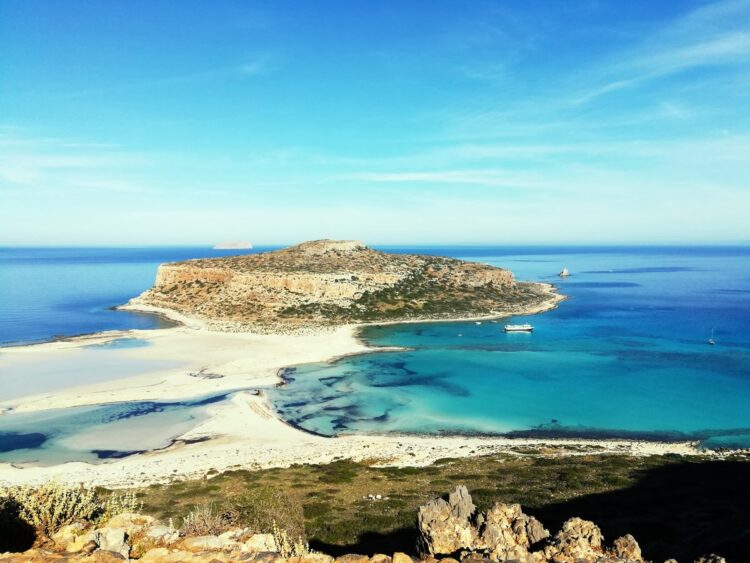
Western Crete is famous for a reason – it packs in a lot of experiences, whatever your interests and tastes might be. Chania Beaches – like fabulous Balos (above) are some of the most famous in all Greece.
Additionally, there are famous gorges for some epic hikes, beautiful villages, and the enchanting town of Chania itself – widely thought to be the loveliest of Crete. Here are some of the highlights.
The Samaria Gorge
One of the epic hikes of Europe, yet suitable for amateurs who are simply in pretty good shape, the Samaria Gorge is a key life experience. The roughly 17 kilometers are downhill – and steeply at first – walking sticks would really help take some weight off your knees.
The gorge descends 1200 meters, from Xyloskala, to Agia Roumeli, through magnificent terrain. At the end, you’ll walk by a cool stream between narrow walls. At Agia Roumeli, you can refresh yourself with a dip in the Libyan Sea before boarding a boat – it’s the only way to get to and from this rugged and remote beauty of a beach.
Loutro
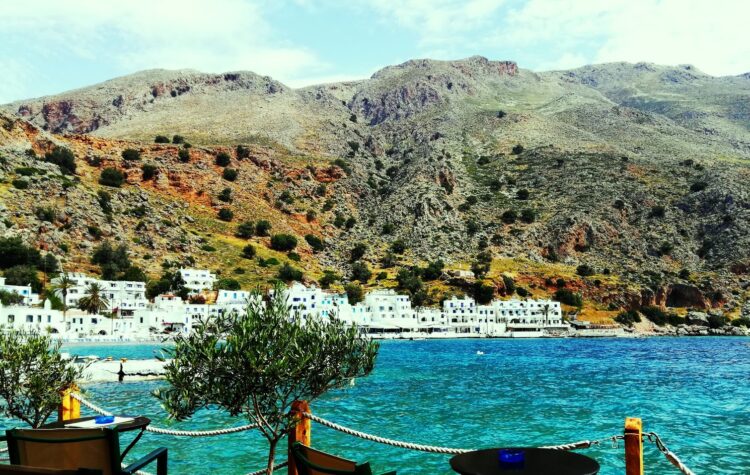
En route from Agia Roumeli to Sfakia, where you can catch a bus back to Chania, you’ll see Loutro. Some boats stop here, in this tiny idyllic cove that has no cars and no road.
Surrounding the cove are little fish tavernas and rooms to stay in and little cafes for fresh orange juice in the morning. There’s a beach at one end. If you want to get away from it all, this is where you go.
Elafonissi
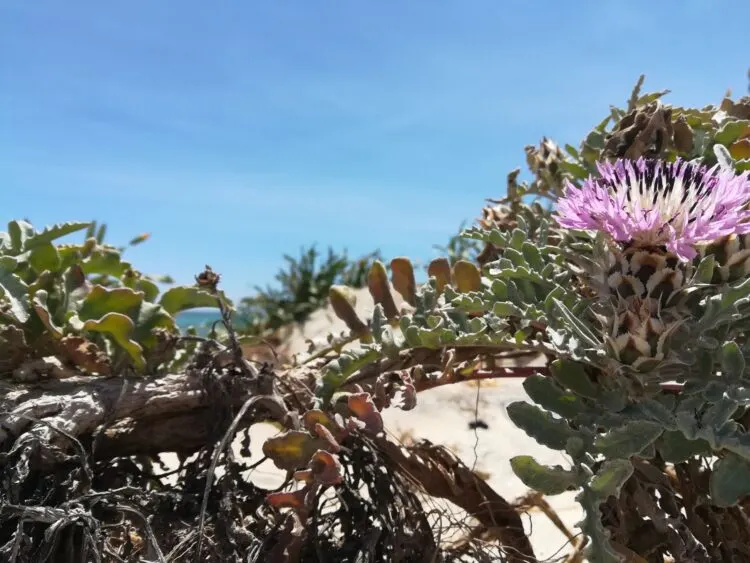
A natural protected area, this island, lagoon, and beach are a haven. Rare wildflowers clever the pure white dines of silky sand; the whole lagoon is pink, thanks to a rare coral in the sand.
The lagoon is sheltered and calm, white the open sea is great for windsurfing. The lagoon is so shallow that you can wade out to the island and pick a secluded spot among the dunes.
Therisos Gorge and Therisos Village
Directly outside of Chania ton is one of the loveliest drives of Crete. Therisos gorge, with its high walls and narrow road, borders a stream. After about 20 minutes, you arrive in the village of Therrisos.
This is the town of the mother of Eleftherios Venizelos, the great statesman, and it played a huge role in the history of modern Crete. You’ll find a Museum of National Resistance as well as a Historical and Folklore Museum. But that is not why most people come to Therisos.
This is where the Cretans come for a beautiful drive followed by a great meal – the tavernas of Therisos are famous for the excellence of their meats. If you have not tried goat yet, this is the place to do so (imagine lamb, but with a cleaner, more herbaceous taste).
Chania Town
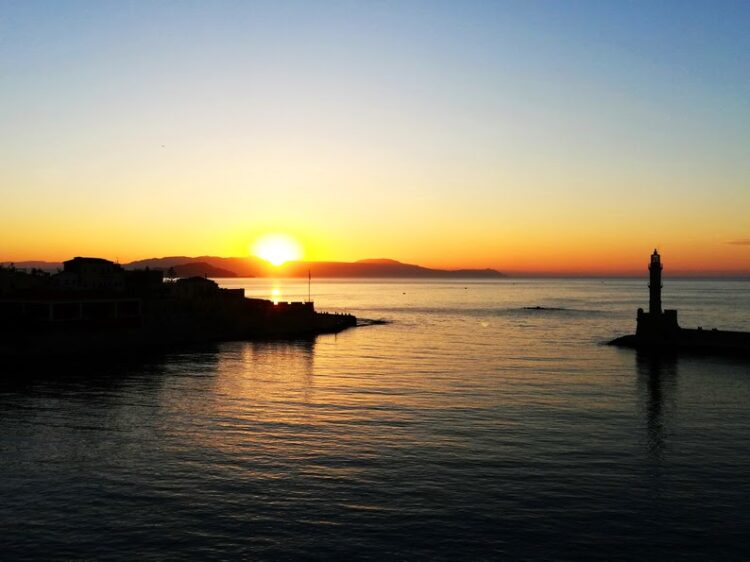
The harbor of Chania with its Egyptian lighthouse and Venetian boatyards is one of the most photographed locations in Greece. Come and see what all the fuss is about – you won’t be disappointed. Behind the harbor is a tangle of narrow passageways strewn with bougainvillea and jasmine.
Local merchants sell quality handcrafted items from little shops, and there are tavernas in courtyards open to the night sky. By day, visit the central market for some local color and pick up delicious local cheeses and tiny green olives bright with lemon flavor.
Then go for a coffee in the shady square of Splanzia, or walk to historic Halepa with its beautiful homes. By night, join the locals in the Kypo- the central park, where there is an outdoor garden cinema (films are in their original language with Greek subtitles), then go for ice cream or a cocktail at the cafe in the garden, in a little belle-epoque mansion.
3. Rethymnon
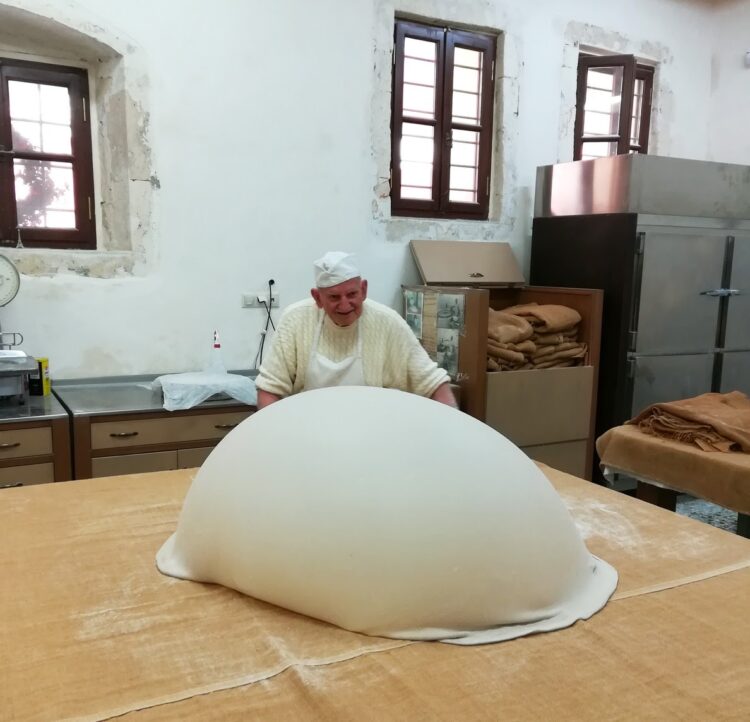
Just East of Chania is Rethymnon town and Rethymnon prefecture. Rethymnon itself is absolutely charming – sort of a smaller, low-key version of Chania with much to enjoy in its own right, like the famous artisanal phyllo shop in the old town and the lovely Rimondi Venetian fountain.
Rethymnon is also at the heart of many wonderful destinations. Here are some highlights.
Enjoy the Opulence of the Cretan Renaissance at the Arkadi Monastery
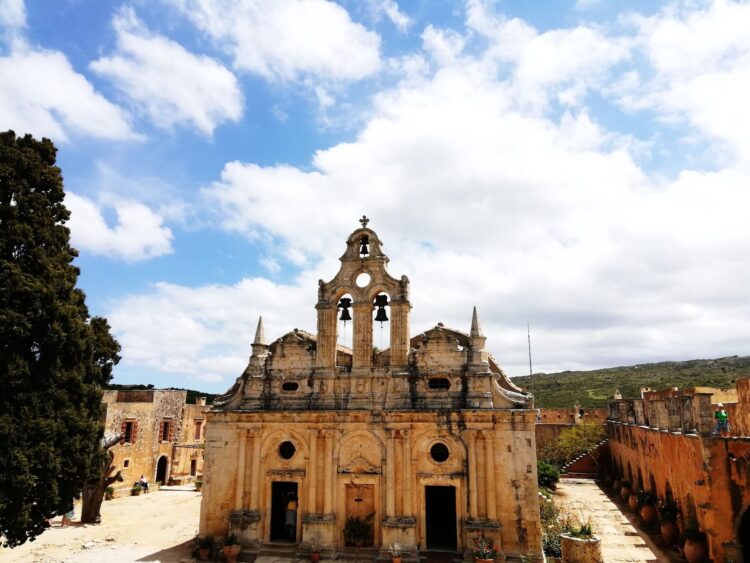
Crete is home to many spectacular monasteries, and Arkadi is one of the finest. While much of Greece was under the Ottoman rule from the 15th century, Crete was controlled by the Venetians (from 1205 to 1669).
Under Christian rule, culture and the arts flourished. The Arkadi Monastery, near Rethymnon, has a splendid 16th-century chapel – an ideal expression of the Renaissance and early Baroque grandeur of the “Cretan Renaissance.”
Remember that this is the land and era of El Greco – the famous painter who made his mark in Spain. If you feel like a beautiful country drive, you can visit the small El Greco museum in Fodele, his birthplace – the charming traditional village is just an hour from here.
Anogia – the Real Cretan Experience
If you have to pick just one Cretan village to get a true taste of authentic Crete, then this is the one. Hig on the slopes of Mt. Psiloritis and not too far from the cave that claims to have sheltered the infant Zeus is Anogia.
This proud village has been razed to the ground three times – twice by the Ottomans and once by the Germans in WWII. This is where you come to pay your respects and see what the Cretan character is made of.
But it’s not just history – Anogia is famous for being the hometown of some of the most famous musicians of Crete. For some passionate Lyra playing that stirs the soul, stay into the evening, and you may hear some. Or come during a village festival – as locals and check out posters to discover village festival dates – there are many, especially in the summer.
Spili
Crete is quite narrow here from north to south, so you may want to check out the south coast. En route to Preveli, try a stop at the lush mountain village of Spili. The village is famous for its magnificent fountain, where sweet and cold mountain water gushes forcefully from the mouths of some 20 lions, carved in the Venetian era.
Preveli
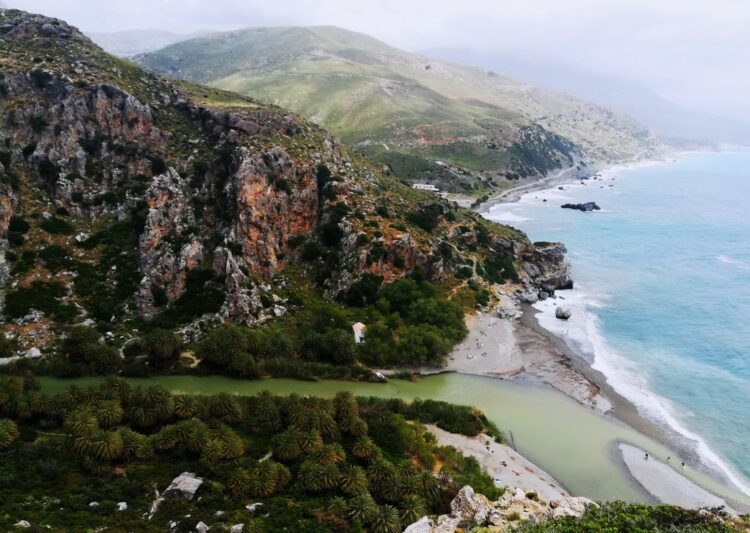
A beautiful monastery perched high above the Libyan sea is your first stop. Visit the chapel and remember the proud monks who bravely participated in uprisings against the Ottomans and the Cretan resistance.
Then, find the stairs that descend to the beach far, far below. A river lined with palms flows into the sea for an oasis-like experience.
4. Explore the Secrets of Lasithi
The great majority of visitors to Crete are more familiar with Western Crete. This leaves eastern Crete’s Lasithi region, with the city of Agios Nikolaos, much less explored.
Except for the luxury resorts along the north coast around Mirabello Bay and Elounda, Lasithi is relatively wild and free of mass tourism.
This is a fantastic region to discover. Hikers will love the UNESCO global Sitia Geopark – nearly 400 square kilometers of protected ecosystems of rare flora and fauna. Meadows, gorges, and caves reward explorers and nature lovers.
The Palace of Zakros and the Gorge of the Dead
History fans and hikers alike will enjoy the Gorge of the Dead – despite the name, this beautiful gorge – which is part of the E4 – is a magical place filled with positive energy.
The gorge that meets the sea is the Minoan Palace of Zakros, and google takes its name because the Minoans laid their dead to rest in the caves high in the gorge’s walls. The Terra Minoika is a wonderful place to stay, and the night sky here – far from any light pollution, is a wonder to behold.
Visit Spinalonga Island
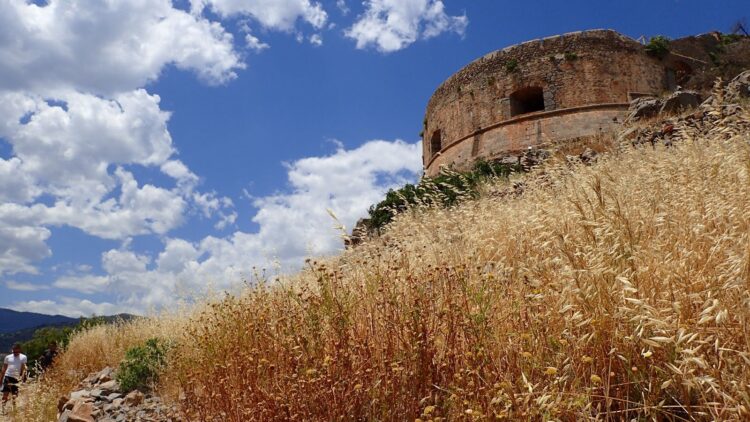
This tiny island was once one of the greatest fortresses of the Mediterranean. In ancient days, this was the post of Olous. But by the 7th century AD, the area was abandoned.
The seas were so thick with pirates no one could safely live in this beautiful spot. Then, eight centuries later, the Venetians came. They named the bay Mirabello – the name it still has (“beautiful view”). They set up salt pans in the lagoon.
Then they fortified the island to protect them. The Ottomans captured SPinalonga in the early 18th century. Later, after the liberation of Greece. Spinalonga entered another important phase in its history as a famous leper colony from 1903 to 1957.
A museum of this fascinating period is set among the beautiful ruins on the island. The book “The Island” of 2005 by Victoria Hislop tells the tale.
The Palm Forest of Vai
There’s more enchanting nature in Lasithi. On the northeastern tip of the Crete, Vai has Europe’s largest palm forest, where thousands of date palms – an endemic species – thrive at the edge of a sandy beach.
Toplou Monastery
While at Vai, you’re just ten minutes from the toplou Monastery. With its 10 meter-high walls, the Monastery houses many wonderful icons, vestments, Gospels, and religious objects. But in addition to being a fine destination for religious and cultural tourism, this is also an active winery.
The Toplou Monastery produces excellent organic wines from indigenous Cretan grape varieties and the distilled spirit tsikoudia (“raki”). You can sample your drinks with the finest local products.
Chrissi Island
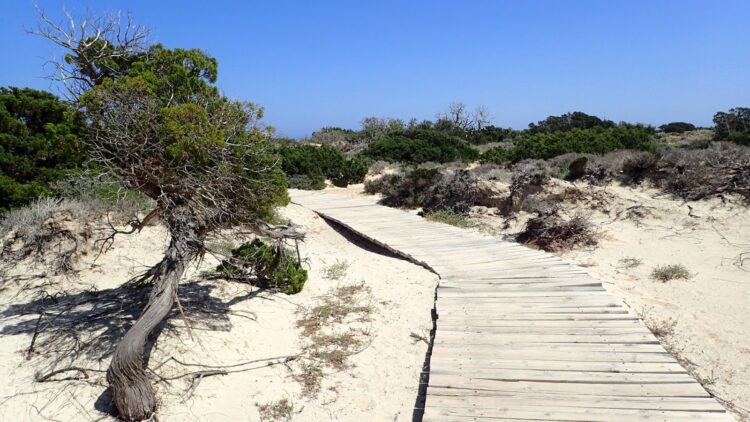
15 kilometers off the shores of Ierapetra – the main town of southern Lasithi – in the Lybian Sea is a little paradise. Chrissi is an uninhabited island of silken white sands, surrounded by seas that are an almost impossible shade of turquoise.
Rare Lebanese Cedar trees cover the island. Boats go regularly. It’s magnificent. You won’t find anything to eat – just a cantina for refreshments. Afterward, back in Ierapetra, eat at the local favorite “Napoleon” for top-quality home-style cooking.
adult-only hotels in Crete
Frequently Asked Questions
Where to stay in Crete?
Crete offers diverse accommodation options to suit all preferences and budgets. From luxurious beachfront resorts with stunning views of the Mediterranean to adult-only hotels in Crete to charming boutique hotels nestled in historic villages, visitors can find accommodations that cater to their desires. Additionally, for those seeking a more immersive experience, traditional guesthouses provide a chance to connect with local culture and hospitality.



Leave a Reply